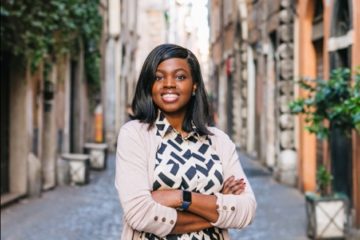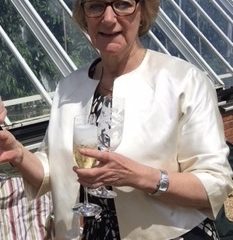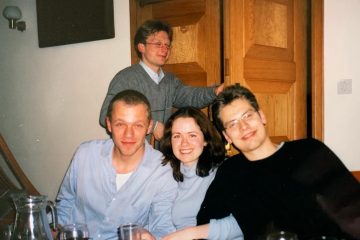My first visit to St Edmund’s was for football training in 1989. The members of the New Hall cuppers team used to stroll across the fields at the back of our college to the full-sized pitch laid out at St Ed’s. Even then, the pitch had its eccentricities and the thoughtful planting of one of the arboretum trees on the corner-post did lead to some prickly encounters whilst running backwards around the boundary. Not only has that tree grown to monstrous proportions since then, the College has also expanded, encroaching upon the field from every side. In those days, beyond the Norfolk building were a nut orchard where Shakespeare was performed, a tennis court and, I was reliably informed by some resident children, fairies.
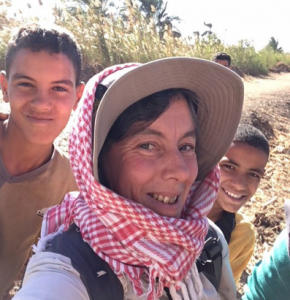
Apart from visits to the famously convivial bar for bops and ‘sweaties’, as the dances were charmingly known back then, I did not really get to know St Edmund’s until, recruited by Bob White, I became a research fellow in 1994. My PhD at New Hall had taken me to Turkey and then to a job in Ankara after graduation. Returning to the UK to get married, I searched high and low for an academic post. In the mean-time I worked for John Lewis marshalling men’s underwear and later school-wear by day and wrote up papers from my PhD on an early lap-top in the evenings. Eventually, the hard work paid off and I landed a postdoc in the Department of Earth Sciences, by chance I was back in Cambridge.
The postdoc was my idea of glamour; romantic nights with my mass spectrometer, lit by the glow of its twinkling LEDs as I changed over its pumps, lovingly fed it liquid nitrogen and loaded in hundreds of strontium samples, all extracted during painstaking lab work. There was also fieldwork in the headwaters of the Ganges in India and a long-term collaboration with academics from the Wadia Institute of Himalayan Geology to enjoy. Having studied very young volcanoes for my PhD, the theme of fieldwork on very young geology continued with this postdoc standing me in good stead for my later research. We explored the way that erosion in the Himalayan range affects sea-water chemistry and how the emergence of a large mountain range can change global climate. I loved College life and the chance to meet people who were not dressed in head-to-foot white lab overalls.
In my early days St Ed’s had 186 students and 28 fellows. As the Dean told me at breakfast – never before had the College had so many members and buildings were under acute pressure. The 28 members of the fellowship set out, led by Brian Heap and then Paul Luzio to extend the College by building the Richard Laws, Geoffrey Cook, Brian Heap and Library buildings. At this stage we had to find a name for the Norfolk Building which, until then, had been simply ‘The College’. We also gradually drew in the White Cottage and Bene’t House to accommodate our growing numbers by which time, the number of members had grown again fuelled by ambitious expansion plans in the University. It was back to the drawing board and under Paul Luzio and Matthew Bullock Mount Pleasant Halls came into being.
Our rapidly expanding college provided wonderful opportunities for us research fellows who were expected to take a full part in the Governing Body of which, in the early days, we formed around a quarter. We debated linen cupboards, tap washers, pensions and student finance with the best of them. As there was less seating in the dining hall we also had room for a piano and, after dinner, Terry McLaughlin, would bring out the song books for a good sing-a-long. The kitchen staff cleared up between bouts of singing and waltzing. The panto was also very much in evidence. The then Senior Tutor, Paul Luzio, told us in our first term that the panto was compulsory for new fellows – we believed him. The subject of the panto was food and the horror of threatened charges for sherry before dinner. Plus ça change! As an ingenue I made my debut as Chérie Before-dinner – a luckless cleaner, transformed into a vision in gold lame, who would go to the ball after all.
Around this time, my research career took a sharp turn. One day, tiring a little of labwork, I noticed a hand-written postcard at Earth Sciences asking for an ‘expert in amethysts’ to undertake fieldwork in the ancient mines of the Eastern Desert of Egypt. I replied to explain that geologists didn’t come in those flavours and was duly appointed. Then, geoarchaeology was an emerging field and my colleagues were among the first to take the geologist with them into the field rather than consult them upon returning home. One dig led to another and since then I have enjoyed working at more than twenty sites in Egypt and other countries. My findings have recently been published as a Cambridge University Press book on the Nile in ancient Egypt. A senior academic warned me at the outset that there are no jobs in geo-archaeology. Fortunately, I also enjoy teaching and tutorial work so my other duties in the University allow me free rein with my research interests. I am glad to say that, these days, there are jobs in geo-archaeology, the field is coming of age.
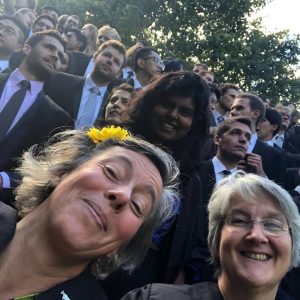
Over the past twenty-two years I have enjoyed the close camaraderie of working, sometimes under great pressure, with my fellow fellows and been delighted to meet and support many students through the years. It is always a delight to hear or receive a visit from a former tutee and these days they increasingly come back with their children, themselves contemplating university. The physical Eddies that I joined is almost unrecognisable in the college of today but the warm welcome and the family atmosphere continues to make St Edmund’s a wonderful place to work.
– Judith Bunbury
